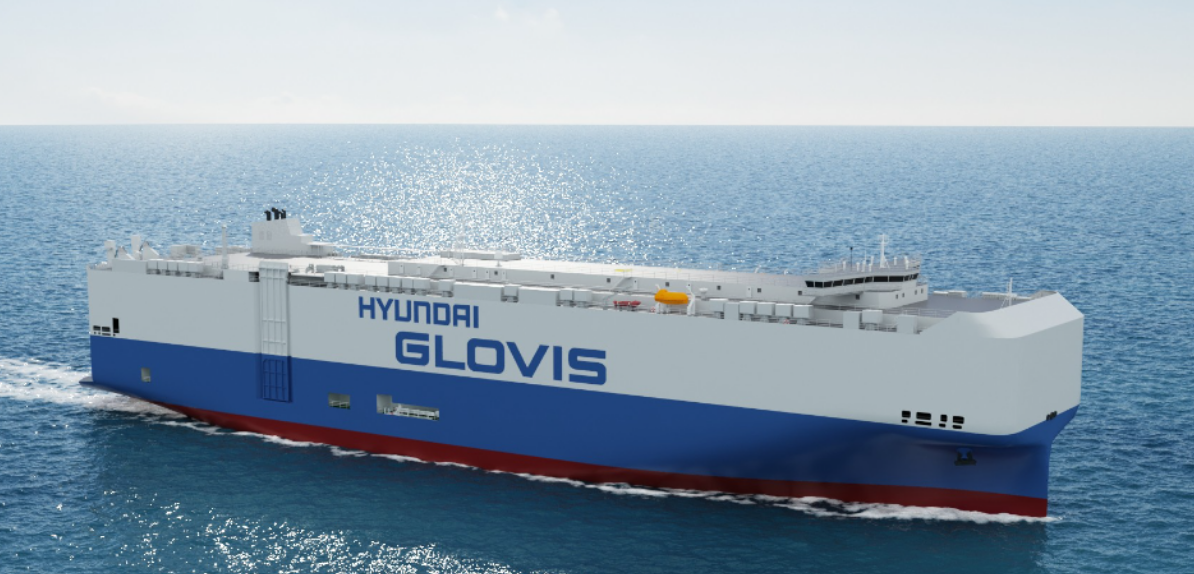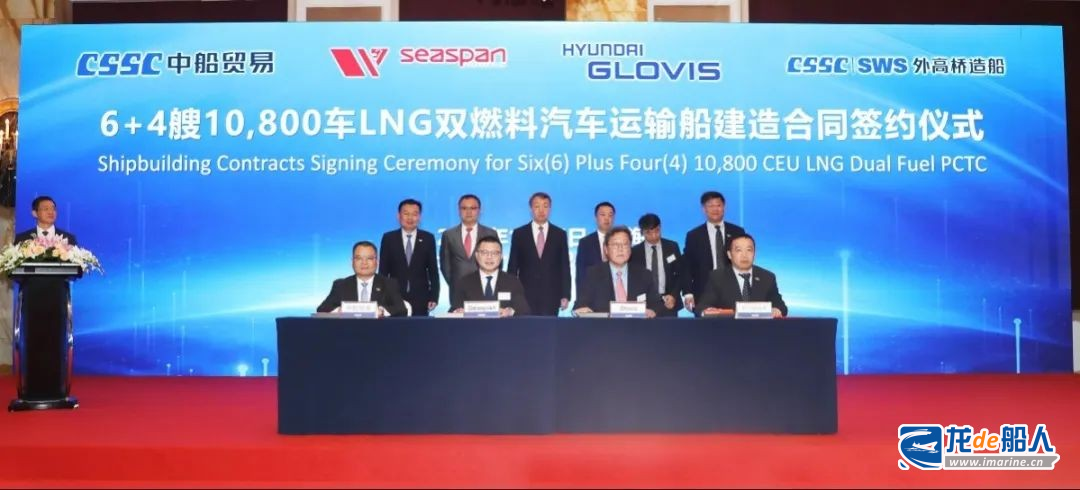In recent years, the automotive industry has been facing a shortage of newly built PCTCs, which has led to a bottleneck in specialized automotive transportation capacity. Based on this situation, Hyundai Glovis, the shipping and logistics department of South Korean automotive giant Hyundai Motor Group, goes ahead with the construction of the world’s largest liquefied natural gas (LNG) dual-fuel PCTC.

Korea’s oceans ministry announced this month that it would sign a Memorandum of Understanding (MOU) with Hyundai Glovis through Korea Ocean Business Corporation (KOBC) and place an order for four 10,800 CEU LNG dual-fuel PCTCs with KOBC as the owner, which are expected to be delivered and chartered to Hyundai Glovis in 2027.The total value of the order will be 610 million US$ (approx. 4.383 billion RMB).
According to the latest news from Trade Winds, four 10,800 CEU LNG dual-fuel PCTCs will be undertaken by Shanghai Waigaoqiao Shipbuilding(SWS) and Guangzhou Shipbuilding International(GSI), respectively.
Korea’s oceans ministry said the 10,800 CEU LNG dual-fuel PCTC newbuilding program would help alleviate a chronic shortage of carriers globally.
It is understood that Hyundai Glovis announced in 2023 that it would order 10,800 CEU LNG dual-fuel PCTCs, and its investment plan was approved on October 26, 2023.
The 10,800 CEU LNG dual-fuel PCTCs project is the world’s largest PCTC to date, breaking the record of 4+8 9,350 CEU PCTCs that China Merchants Industry Nanjing Jinling yard took over from Norway’s Wallenius Wilhelmsen in October of last year. While the largest PCTC currently in operation is the 8,500 CEU PCTC built by Xiamen Shipbuilding Industry.
Including the four latest orders, Hyundai Glovis is expected to have 24 LNG dual-fuel PCTCs by 2027.
During Marintec China 2023, Hyundai Glovis selected Seaspan Corporation and Han Shin Marine (HMM, formerly Hyundai Merchant Marine) as owners, and signed contracts for the construction of 6+4 10,800 CEU LNG dual-fuel PCTCs with SWS and GSI respectively, which are expected to be delivered successively from 2026 to 2027.

It is the first mega PCTC newbuilding project exceeding 10,000 CEU worldwide, which is a milestone in the history of the development of the world’s PCTC ship types.

Designed by Shanghai Ship Research and Design Institute (SDARI), the PCTC is equipped with 14 car decks, 5 of which are elevated or movable decks, providing excellent loading capacity for ultra-high and ultra-heavy ro-ro cargoes.
Among them, the multi-storey deck is suitable for loading new energy vehicles such as hydrogen vehicles, compressed natural gas (CLNG) vehicles, liquefied petroleum gas (LPG) vehicles and other new energy vehicles. The rest of the decks are suitable for carrying packaged dangerous goods cargoes and refrigerated containers, which greatly enhances the diversity and flexibility of cargo loading.
In addition, the PCTC is designed with an ammonia fuel reservation and a methanol fuel reservation, which can be retrofitted to use “carbon neutral” fuels in the future.
Known for its fleet of more than 70 car carriers, Hyundai Glovis’ fleet also includes tankers, bulk carriers, and will enter the natural gas transportation market in 2024. Over the past few years, the company has strategically expanded its non-Hyundai customer base to include companies such as Volkswagen, Ford and BMW. Over the past few years, the company has strategically expanded its automotive customer base, such as Volkswagen, Ford and BMW.


